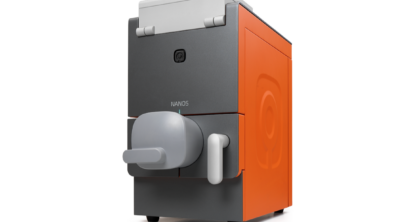The Trends Driving Modular Plant Design

Let’s face it: designing and building a processing plant is an old school industry.
It has one foot firmly in the construction industry. It involves building a large scale structure. It traditionally involves a site where the structure is built up for months. It is a lot like building a commercial building. It has the other foot, however, firmly in manufacturing. Processing plants must support operations that often require high precision production. Ultimately, it falls into neither category — it kind of falls into both.
In recent years, there’s been a new trend with processing plants: modular design. What’s going on? Why is this trend gaining traction? What do companies hope to get out of it? We’ll touch on all those questions here. However, note that I’ll be speaking on a webinar on this exact topic in a couple of weeks. If this is a relevant topic, you might want to join us.
With all that context, let’s dive in.
Offsite Construction, Increased Precision, Standard Interfaces
There are numerous reasons why companies are increasingly adopting a modular plant design. One of those reasons deals with the plant construction process.A construction site presents many variables that are difficult to predict when designing a processing plant. That results in many change orders that slow down the construction process. Those are delays that many can ill afford.
Instead, some companies are building sections of a plant, sets of equipment, and other machinery offsite. This work takes place in a manufacturing environment where the environment varies less than a construction site. As a result, there are fewer change orders. Construction and assembly of these systems happen far faster. The contractor transports those items to the construction site and incorporates them into the site.
For engineering, this implies some changes to the design process.Engineers must clearly understand which aspects of the processing plant the construction plan. Changes to the design process include planning what is assembled off-site and what is constructed on site. Changes also must include detailing the interface of the modular system and the plant.
Notably, the need for greater precision with modules also speaks to a critical technological need. Such modules need high precision definitions. Mechanical CAD is the best fit for this work as opposed to Building Information Management (BIM) solutions. The latter lacks the fidelity to model these modules accurately.
Modularity: More Options, Fewer Systems
A different, but just as important, trend driving the adoption of modular plant design lies in customer demands in product complexity. Every plant is unique. However, designing every single aspect of a plant from scratch every single time is a failing strategy. There is too much work to do in too little time. Instead, many companies designing processing plants aim to reuse prior work. Tweaking and modifying prior work, however, is extremely challenging.
Instead of merely trying to tweak prior design work, some companies are transitioning to a modular platform. In this effort, engineers develop modules that fulfill particular functions. Engineers then mix and match those modules to plan unique combinations, fulfilling the unique needs of a specific processing plant. The result is a platform composed of all those modules. Such a platform won’t cover the need of every single plant. However, if it reduces unique engineering work from 70% to 20%, that is a significant improvement for the company.
There are unexpected benefits to a modular strategy. For one, it is far faster to configure the design of a plant from a platform. This configuration path to plant design means costing, pricing, and quoting teams can respond faster to bid requests. Furthermore, configuring the design of a plant translates to less engineering work per project, translating to the need for less expertise. That makes the whole company easier to staff and fewer overworked engineers.
This type of effort, however, doesn’t happen with a snap of the fingers. It takes some meticulous planning to identify where variability is needed and where standard functionality is needed. The process to define the modules, the functionality each provides and building out the entire platform can take a little bit of time. Some key technologies can help, however. Requirements management as well as the ability to allocate requirements to designs, such as modules, goes a long way towards automating the management of functions within the platform.
Takeaways
The plant design and construction industry is an old school one. However, many companies are injecting a bit of innovation into the processes by adopting modular approaches. Some do it as a way to enable prefabrication work off-site. Others do it to increase variability for their customers while increasing reuse.In both cases, new technological capabilities are needed to enable change.
Sound like a topic that’s relevant for you and your company? Well, there’s a lot more to cover on this topic, ranging from more details on off-site construction to processes to define modular platforms to what enabling technologies are most crucial. I’ll be talking to these issues, and more, during the next Siemens Digital Industries Software webinar. I hope you’ll consider joining us for what will be a great discussion.
Modular Plant Design in Solid Edge
From rudimentary 2D pipe planning to full-scale 3D piping systems, Solid Edge modular plant design solutions streamline workflow processes. Linked 3D piping, support for piping and instrumentation diagrams (P&ID) and Isogen® output ensure that your products are designed right—the first time, and every time. These software modules allow users to easily capture design intent/logic in a 2D schematic, then develop 2D P&IDs into a comprehensive 3D model of a process plant.



Comments